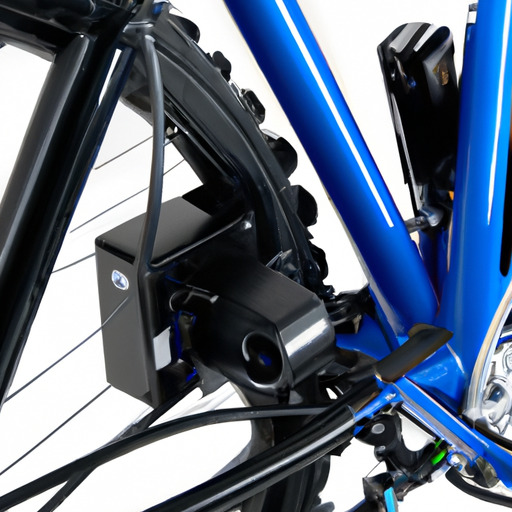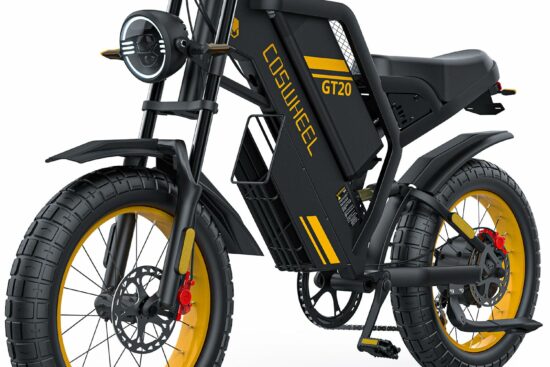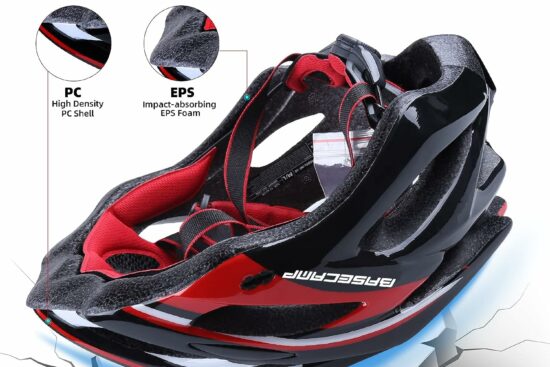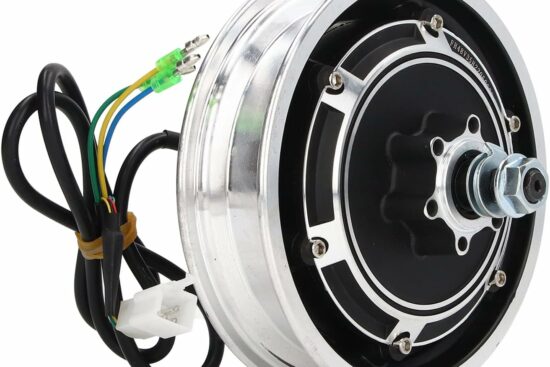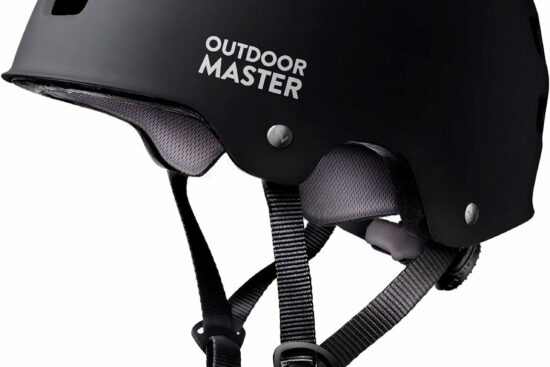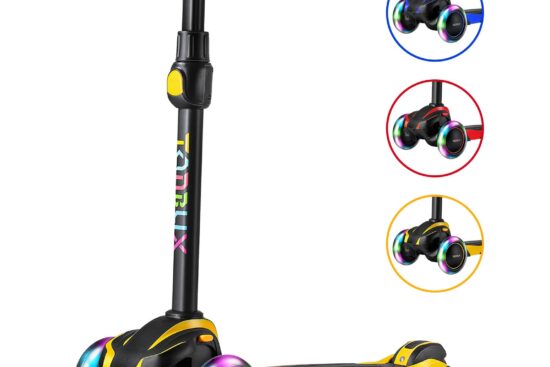
Have you ever wondered if it’s possible to convert your regular bike into an e-bike? Well, the answer might surprise you. In this article, we’ll explore the possibility of transforming your beloved bike into an electric-powered machine. We’ll dive into the different conversion kits available, the necessary components, and the potential advantages and disadvantages of converting your bike. So, if you’re curious about turning your pedal-powered ride into an electric adventure, keep reading!
If you’ve ever thought about upgrading your bike to an e-bike, this article is for you. We’ll delve into the world of e-bike conversion and discuss the various options you have at your disposal. Whether you’re looking for a cost-effective way to go electric or if you simply want to add some extra power to your rides, we’ll provide you with all the information you need to know. So, if you’re ready to explore the exciting possibilities of converting your regular bike into an e-bike, read on and discover the world of electric biking.
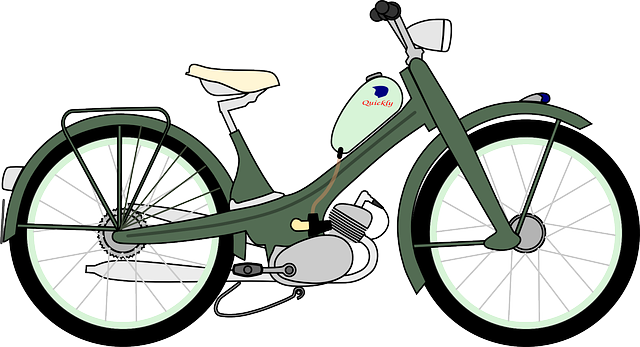
What is an e-bike?
Definition and explanation of an e-bike
An e-bike, short for electric bike, is a bicycle that is equipped with an electric motor and a battery. This motor assists the rider by providing additional power, making cycling easier and more efficient. Unlike a motorcycle or a scooter, an e-bike still requires pedaling, but the motor provides extra assistance to reduce the effort required. E-bikes come in various styles and designs, ranging from mountain bikes to city cruisers, making them suitable for different purposes and terrain.
Key components of an e-bike
An e-bike consists of several key components that work together to provide the electric assistance. These components include:
-
Motor: The motor is the heart of an e-bike. It is usually located in the hub of the front or rear wheel or in the center of the bike frame. The motor provides the power to assist the rider’s pedaling.
-
Battery: The battery is responsible for supplying power to the motor. It is usually mounted on the frame of the bike, either in a rear rack or in the frame itself. The battery capacity determines the range of the e-bike, which is the distance it can travel on a single charge.
-
Controller: The controller is a device that regulates the flow of electricity from the battery to the motor. It allows the rider to control the level of assistance provided by the motor, typically through a display or buttons on the handlebars.
-
Sensor: The sensor is a component that detects the pedaling motion of the rider. It sends signals to the controller, which then activates the motor to provide assistance. The sensor ensures that the motor only engages when the rider is pedaling.
-
Wiring and electrical connections: Various cables and connectors are used to connect the motor, battery, controller, and sensor. These electrical connections allow the components to work together seamlessly and safely.
Benefits of converting a regular bike into an e-bike
Increased speed and efficiency
Converting your regular bike into an e-bike offers several benefits. One of the main advantages is the increased speed and efficiency it provides. With the assistance of the electric motor, you can reach higher speeds with less effort. Commuting to work or running errands becomes quicker and easier, as you can travel at a faster pace without becoming exhausted.
Assistance in uphill climbs
Hills and inclines can be challenging for even the most experienced cyclists. However, with an e-bike, tackling uphill climbs becomes much more manageable. The motor provides a boost of power, allowing you to maintain a steady pace and conquer steep gradients without exerting excessive effort. This makes cycling in hilly areas or during longer rides a more enjoyable experience.
Extended range and reduced fatigue
Another advantage of converting your regular bike into an e-bike is the extended range it offers. The battery-powered motor provides additional assistance, allowing you to cover longer distances without feeling fatigued. This is particularly beneficial for riders who want to explore new routes or undertake longer rides. The reduced physical strain also means that you can ride for longer periods without feeling exhausted, making e-bikes an excellent option for commuting or recreational cycling.
Considerations before converting your bike
Compatibility of bike frame and components
Before deciding to convert your regular bike into an e-bike, it is essential to consider the compatibility of your bike frame and components with the conversion kit. Different e-bike conversion kits are designed for specific types of bikes, such as road bikes, mountain bikes, or city bikes. Check the specifications of the kit you plan to use to ensure that it is compatible with your bike’s frame, wheel size, and other components.
Cost and budget
Converting a regular bike into an e-bike requires an investment in a conversion kit, which can range in price depending on the quality and features. Consider your budget and how much you are willing to spend on the conversion. It is also important to factor in any additional costs, such as tools, accessories, or professional assistance, if needed.
Electrical system requirements
Converting a regular bike into an e-bike involves adding an electrical system to the bike. This includes the motor, battery, controller, sensor, and wiring. Consider the electrical requirements of the conversion kit, such as voltage, amperage, and battery capacity. Ensure that your bike can support the electrical system without overloading the existing components. If in doubt, consult a professional or the manufacturer of the conversion kit for guidance.
Choosing the right conversion kit
Types of conversion kits available
There are several types of e-bike conversion kits available on the market. These kits can generally be categorized into three main types: hub motor kits, mid-drive kits, and friction drive kits.
-
Hub motor kits: Hub motor kits consist of a motor embedded in either the front or rear wheel hub. They are the most common type of conversion kits and are relatively easy to install. Hub motor kits provide direct power to the wheel, offering a smooth and quiet ride.
-
Mid-drive kits: Mid-drive kits are installed in the middle of the bike frame and replace the bike’s existing crank and bottom bracket. They provide power directly to the crankshaft, resulting in improved torque and efficiency. Mid-drive kits are generally more expensive and require more technical knowledge for installation.
-
Friction drive kits: Friction drive kits use a motor that applies pressure directly to the bike’s tire, providing propulsion. These kits are easy to install and remove, making them suitable for riders who want the flexibility of switching between electric and regular bike modes. However, friction drive kits may have slightly reduced efficiency compared to hub motor or mid-drive kits.
Factors to consider when selecting a kit
When choosing a conversion kit, consider the following factors:
-
Power and performance: Look for a kit that provides the desired level of power and performance based on your needs. Consider factors such as motor wattage, battery capacity, and torque. Higher wattage and larger battery capacity generally result in more power and longer range.
-
Ease of installation: Depending on your mechanical skills and experience, you may prefer a kit that is easier to install. Hub motor kits are usually the simplest to install, while mid-drive kits require more technical knowledge and tools.
-
Quality and reliability: Research different conversion kit brands and read reviews to determine the quality and reliability of their products. Look for kits that offer a good warranty and customer support.
Popular conversion kit brands
Some popular conversion kit brands include:
-
Bafang: Bafang is a well-known manufacturer of e-bike conversion kits, particularly mid-drive kits. They offer a wide range of kits with various power options and features.
-
e-RAD: e-RAD specializes in hub motor kits and offers both front and rear wheel options. Their kits are known for their reliability and performance.
-
Tongsheng: Tongsheng is another reputable brand that focuses on mid-drive kits. They offer powerful and efficient kits at competitive prices.
It is important to research and compare different brands and models to find the conversion kit that best suits your needs and budget.
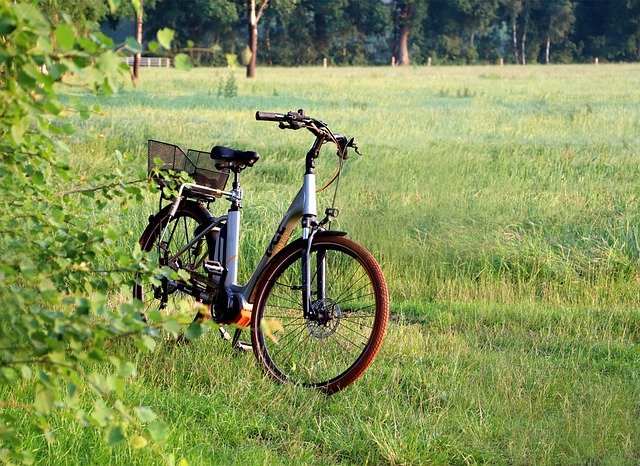
Step-by-step process of converting a regular bike into an e-bike
Gathering necessary tools and materials
Before starting the conversion process, gather all the necessary tools and materials. This may include wrenches, screwdrivers, pliers, cable ties, and electrical tape. Ensure that you have the conversion kit and any additional accessories or components required for the installation.
Removing non-essential bike components
To prepare the bike for conversion, remove any non-essential components that may interfere with the installation of the conversion kit. This may include front and rear fenders, racks, water bottle cages, and bike lights. Keep in mind that some of these components may need to be reinstalled or replaced with e-bike-specific versions later.
Installing motor and battery
Follow the instructions provided with the conversion kit to install the motor and battery onto the bike. The specific installation process may vary depending on the type of kit you are using. Generally, you will need to mount the motor onto the wheel hub or the bike frame and attach the battery to the frame or rear rack.
Wiring and electrical connections
Once the motor and battery are installed, connect the electrical components according to the instructions provided by the kit manufacturer. This typically involves connecting wires from the motor, battery, controller, and sensor. Ensure that the connections are secure and well-insulated to prevent any electrical issues.
Test the system by turning on the e-bike and ensuring that the motor and sensor are functioning correctly. Adjust the settings on the controller, if necessary, to customize the level of assistance provided by the motor.
Maintenance and safety considerations for e-bikes
Regular maintenance tasks
Like any mechanical device, e-bikes require regular maintenance to ensure optimal performance and safety. Some maintenance tasks to consider include:
-
Battery maintenance: Follow the manufacturer’s guidelines for charging, discharging, and storing the battery. Regularly check the battery connections for any signs of corrosion or damage.
-
Motor and drivetrain inspection: Inspect the motor, drivetrain, and chain regularly for any signs of wear or damage. Clean and lubricate the drivetrain as needed.
-
Tire pressure and brake inspection: Check the tire pressure regularly and ensure that the brakes are functioning properly. Adjust the brakes if necessary to ensure optimal stopping power.
Safety gear and precautions
When riding an e-bike, it is important to prioritize safety. Wear a helmet to protect your head in case of an accident. Additionally, consider wearing other protective gear such as knee and elbow pads, especially for off-road or high-speed riding. Follow traffic rules and ride defensively, just as you would on a regular bike. Be aware of your surroundings and always signal your intentions to other road users.
Understanding e-bike regulations and laws
Be aware of the regulations and laws pertaining to e-bikes in your area. Different regions may have specific rules regarding speed limits, motor power, and where e-bikes are allowed to ride. It is your responsibility to ensure that you comply with these regulations to avoid any penalties or legal issues.
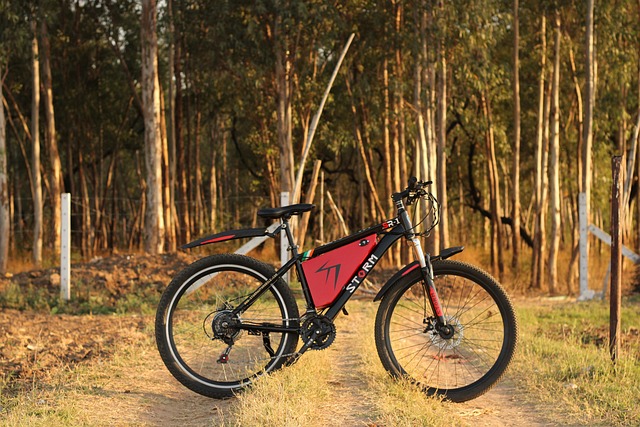
Benefits and drawbacks of DIY conversion
Lower cost compared to purchasing a new e-bike
One of the main benefits of converting your regular bike into an e-bike is the lower cost compared to purchasing a new e-bike. By utilizing a conversion kit, you can transform your existing bike into an e-bike without the need for a significant financial investment. This can be an attractive option for riders who want to experience the benefits of e-bikes without breaking the bank.
Opportunity for customization
Converting your bike into an e-bike offers the opportunity for customization. You can choose the specific components and features that best suit your needs and preferences. From selecting the motor power to designing the battery placement, you have the freedom to create a personalized e-bike that matches your riding style and requirements.
Potential challenges and risks
While DIY conversion of a regular bike into an e-bike has its advantages, it also comes with potential challenges and risks. The installation process requires some technical knowledge and mechanical skills. If you are not familiar with bike maintenance or electrical systems, you may encounter difficulties during the conversion process. Additionally, incorrect installation or faulty wiring can lead to safety hazards and damage to the bike or components.
Professional conversion services
Advantages of professional conversion services
For those who are not comfortable with the DIY approach or want a hassle-free experience, professional conversion services are available. There are specialist shops and services that offer professional e-bike conversion. These services have experienced technicians who can ensure a proper installation and provide guidance on selecting the right components for your bike.
Cost implications
Professional conversion services generally come at a higher cost compared to DIY conversion. The price typically includes the conversion kit, labor charges for installation, and any additional services provided. Consider your budget and weigh the convenience and expertise offered by professional services against the higher cost.
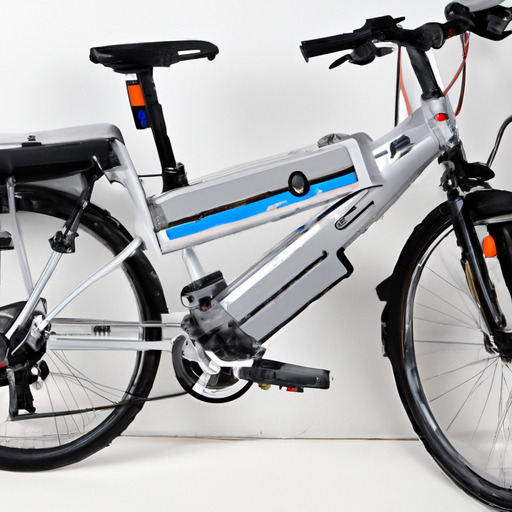
Comparison between converted e-bikes and factory-made e-bikes
Performance and features
Converted e-bikes and factory-made e-bikes both provide electric assistance but may differ in terms of performance and features. Factory-made e-bikes are specifically designed and engineered with integrated components, ensuring optimal performance and compatibility. They often have more advanced features such as built-in lights, integrated displays, and specialized suspension systems. On the other hand, converted e-bikes may have some limitations depending on the quality of the conversion kit and the bike’s original components.
Price and availability
Factory-made e-bikes are readily available from various manufacturers and retailers. They come in a range of prices to suit different budgets. On the other hand, the availability of conversion kits might be more limited, and the price can vary depending on the brand and features. However, converting a regular bike into an e-bike can still be more cost-effective compared to purchasing a new factory-made e-bike.
Conclusion
In conclusion, it is possible to convert a regular bike into an e-bike with the help of a conversion kit. By adding an electric motor and battery, you can enjoy the benefits of increased speed and efficiency, assistance in uphill climbs, and extended range. However, there are several considerations to keep in mind before embarking on the conversion process, such as compatibility, cost, and electrical system requirements.
Choosing the right conversion kit is important, and factors such as power, ease of installation, and brand reliability should be taken into account. The step-by-step process involves gathering necessary tools, removing non-essential bike components, installing the motor and battery, and connecting the electrical components.
Maintenance and safety considerations are crucial for ensuring the optimal performance and longevity of an e-bike. Regular maintenance tasks, proper safety gear, and adhering to e-bike regulations are essential. DIY conversion offers lower costs and customization opportunities but can come with challenges and risks. Professional conversion services are an alternative for those who prefer expert assistance, although they may have higher cost implications.
When comparing converted e-bikes and factory-made e-bikes, consider factors such as performance, features, price, and availability. Ultimately, the decision to convert a regular bike or purchase a new e-bike depends on individual preferences, budget, and needs. With proper research and careful consideration, you can embark on the journey of converting your regular bike into an e-bike and enjoy the many benefits it offers.
